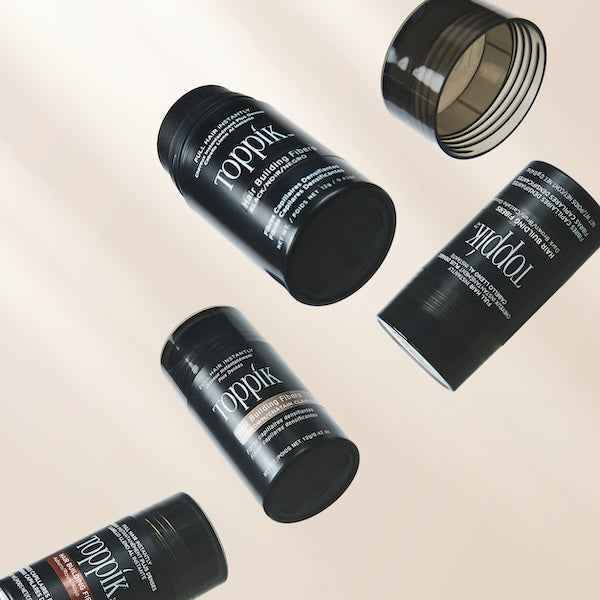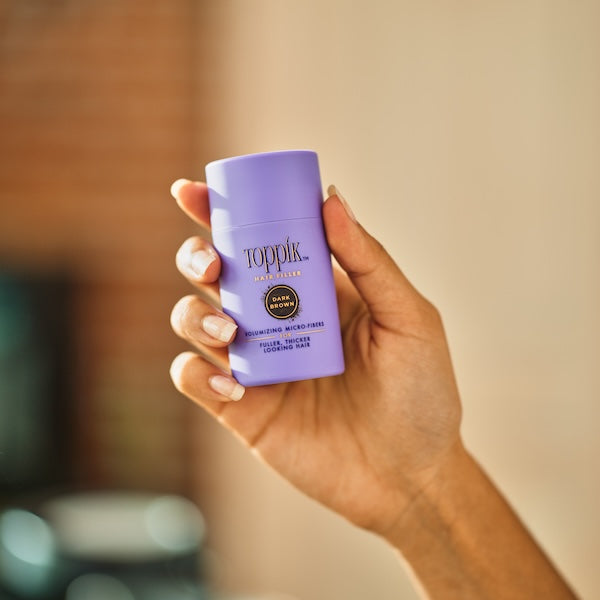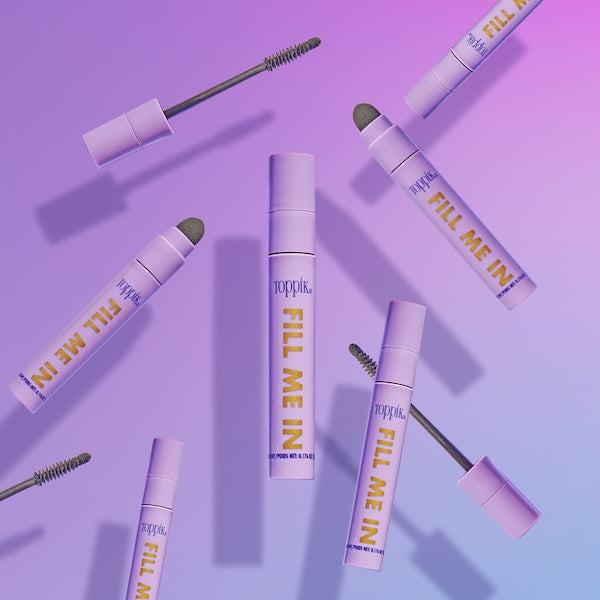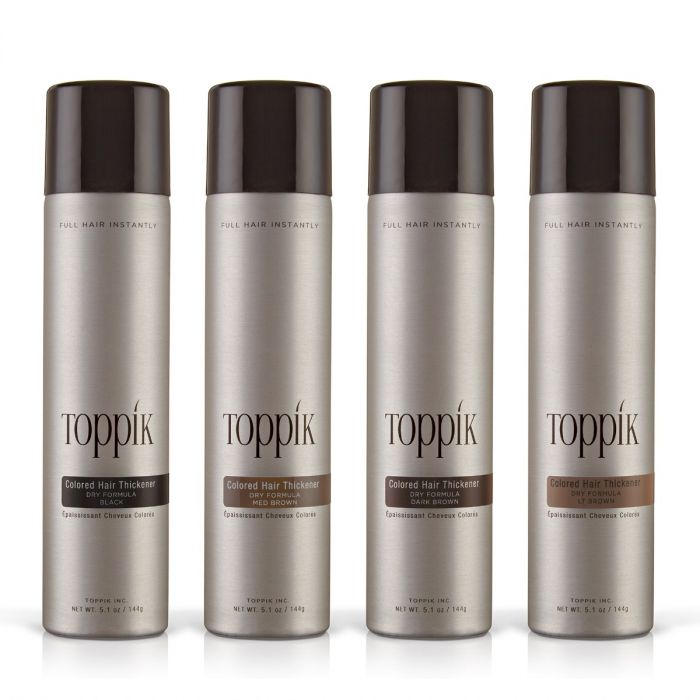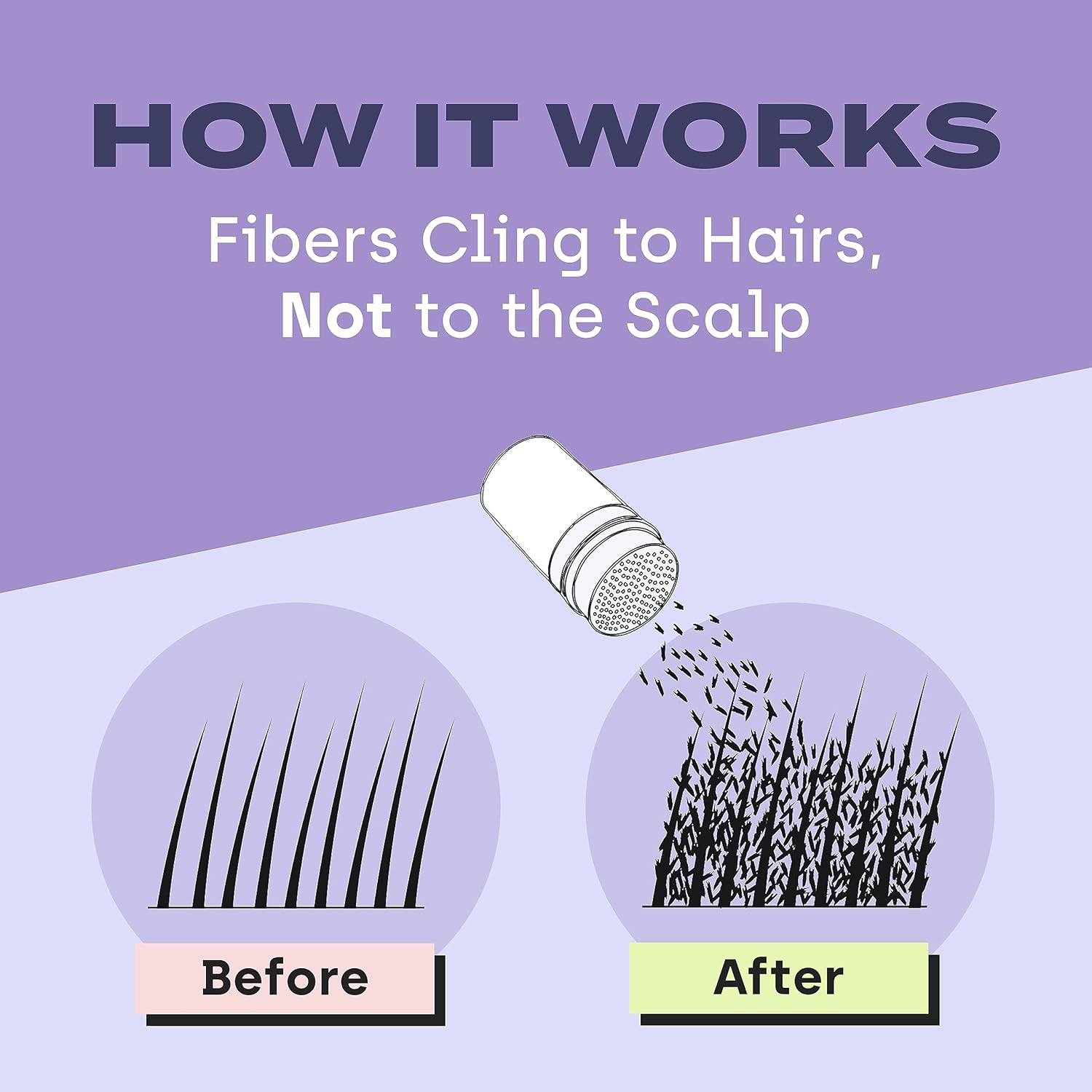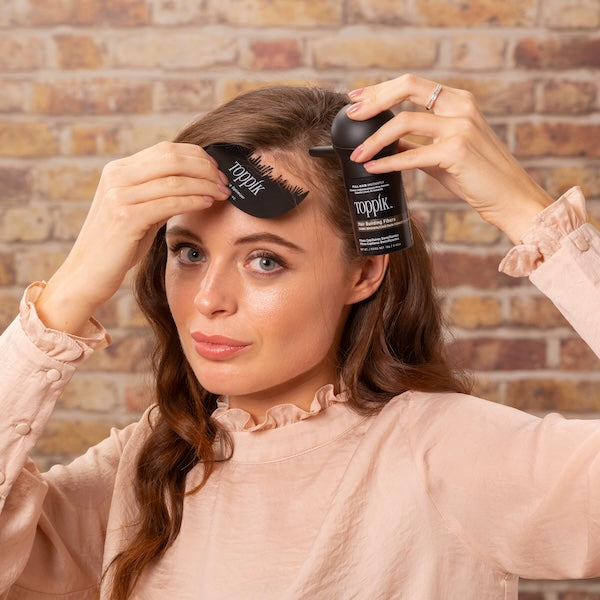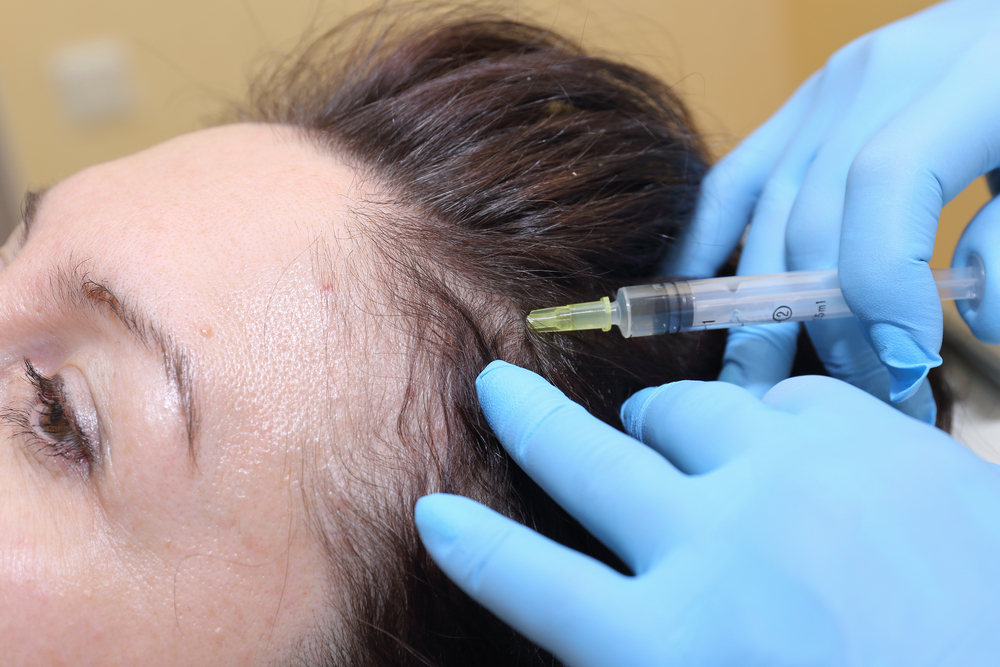September is Alopecia Areata Awareness month. To celebrate, we at Toppik want to provide you with the facts and help those who are struggling with this type of hair loss to know that there are many ways you can cope with and treat this disease. Most importantly, we want you to know that you are not alone and you are beautiful. Join us as we help create awareness for those who are not as familiar with this disease.
What Is Alopecia Areata?
Having random patches of hair fall out is many people’s worst nightmare. But for the 6.8 million affected by alopecia areata, it’s a reality. Alopecia areata is an autoimmune skin disease that causes hair loss on the scalp and body.
It usually starts with small, round patches on the scalp, and In some cases can progress to complete hair loss (alopecia totalis) or total hair loss all over the body (alopecia universalis). This disease only progresses to totalis or universalis in about 5% of cases, so if you have the disease, the odds are in your favor that you will keep most of your hair. 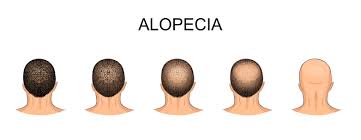
Alopecia areata is not contagious and most often occurs in otherwise healthy people and is not a symptom of another illness. Both men and women can have alopecia areata, with the first symptoms usually appearing during childhood or adolescence. Alopecia areata will affect the lives of over 6.8 million Americans and 147 million people worldwide. The disease is very unpredictable – hair can grow back or fall out at any time. Alopecia areata affects everyone differently. Since the disease only causes hair follicles to shrink, they are still alive and can begin growing hair again as soon as they receive the right signal. The only issue is that scientists have yet to figure out how to create the signal for hair to grow again!
What are the Causes of Alopecia Areata?
Alopecia areata occurs when the immune system begins attacking healthy hair follicles as foreign particles, much as it would react to germs or a virus. As a result, hair follicles shrink and stop producing hair. In this way, alopecia areata is similar to diabetes, lupus, allergies, and other autoimmune disorders. Alopecia can also cause nail problems like pitting, white spots, thinness or roughness.
Research suggests that alopecia areata could also be caused by a combination of genetics and environmental triggers like stress. One in five people with the disease have a family member who has it as well. Many sufferers of alopecia areata report excessive anxiety and stress leading up to their first onset of thinning hair, but stress has not been proven as a definitive cause of alopecia areata. Most likely, the gene for alopecia is present and stress exacerbates the hair loss.
Is Alopecia Curable and How is it Treated?
Unfortunately, alopecia areata is not curable, but that doesn’t mean that there’s no hope! Since your follicles are still alive, hair may regrow on its own. There are no FDA-approved treatments specifically for alopecia, but there are a few techniques your physician may use to decrease your autoimmune response and promote hair regrowth.
Steroid Injections
Injecting a steroid like cortisone into the bald patches may promote hair growth by reducing your autoimmune response in the area. The injections are slightly painful as a needle is involved, but the pain goes away soon after and there are little to no side effects. However, this treatment does not prevent new bald patches from forming.
Topical Treatments
Minoxidil, the active ingredient in hair regroth products, can be applied topicaly and in some cases will regrow hair. Unlike in cases of male or female pattern baldness, treatment can be stopped once the hair grows back. Anthralin is another topical treatment for alopecia areata. Usually used for psoriasis, this tar-like ointment is applied to the affected areas and then washed off after 30-60 minutes. However, this treatment can stain the skin, so make sure you wash your hands after applying it! Diphencyprone, or DPCP, can also be applied to the bald patches. DPCP causes a small allergic reaction, which “tricks” the immune system, sending white blood cells to the affect area. This can stimulate hair regrowth.
Stories of Hope
Viola Davis, star of Making a Murderer, has had alopecia areata since the age of 28. At one point, she lost half of her hair to the disease. For a long time, she wore wigs constantly to hide her hair loss. “It was a crutch, not an enhancement…I was so desperate for people to think that I was beautiful. I had to be liberated from that to a certain extent,” Davis says. So at the 2012 Oscars, she skipped the wig and showed off her natural hair as she accepted the award for Best Supporting Actress. We applaud her for using her special moment to raise awareness! Davis has come to terms with the disease and though she still wears wigs for her roles, she no longer wears them at home. We also found another woman facing her alopecia head on: Becky Catherine Harris, a videographer for BuzzFeed. Harris began losing her hair at an early age. She was treated with cortisone shots every 3 weeks for years, but decided that ultimately, shaving her head was the best choice for her. We think she’s beautiful either way!
Watch her story: What It Feels Like To Lose My Hair
Join Us to Help Raise Awareness
The emotional effects of hair loss can be difficult. Many people with alopecia areata find it comforting to talk to others with the disease. With nearly 2% of Americans affected, you are hardly alone! The National Alopecia Areata Foundation (NAAF) is a great resource for anyone suffering from this disease or curious to learn more about it. 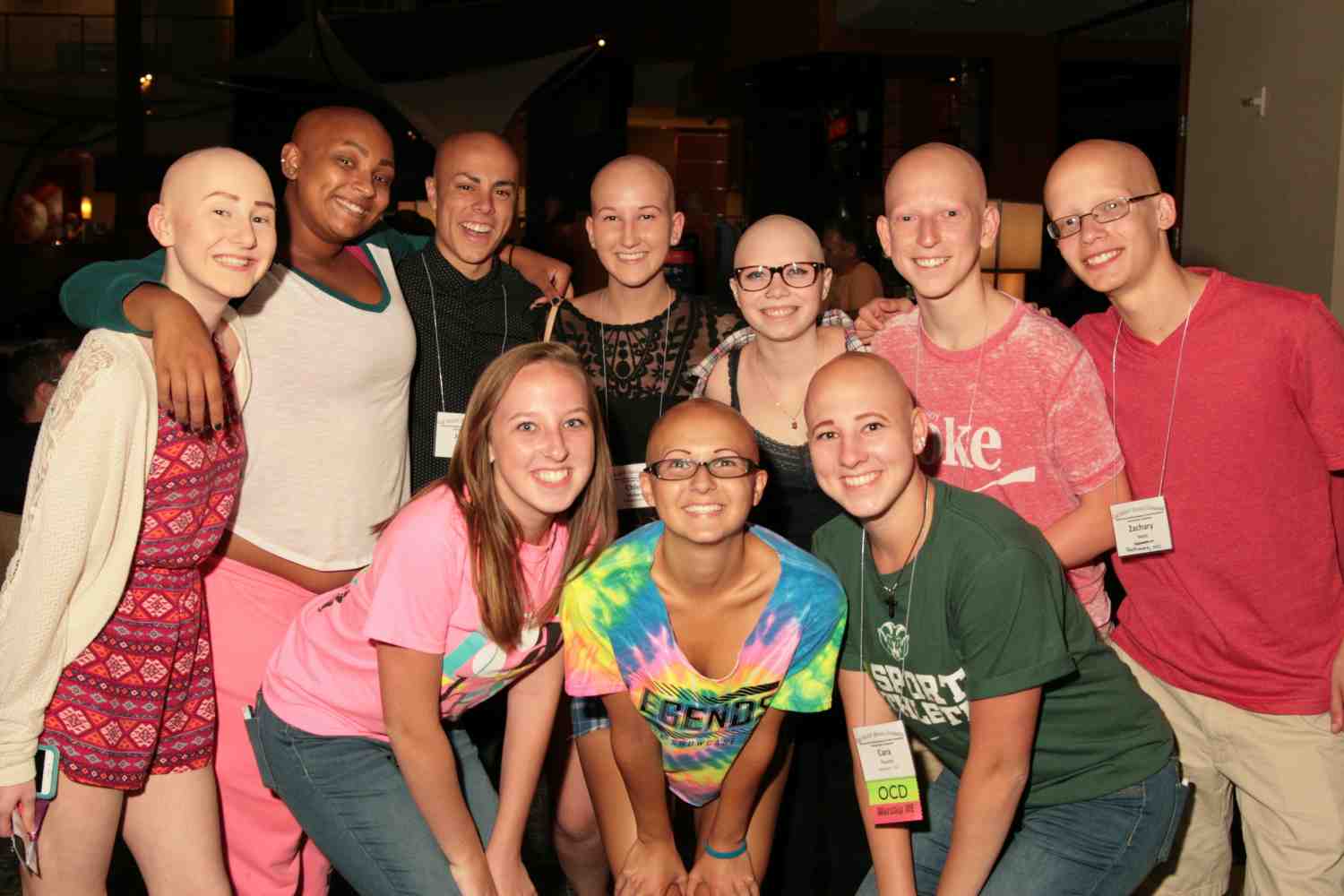
naaf.org
For this month, we encourage you to go out and raise awareness of alopecia areata and show off your inner strength and beauty. Share your story or host an event so your community can learn more about alopecia areata. Who knows, you might find a few friends who know what you’re going through! The NAAF is also hosting a number of events this month, including Rock for Locks fundraisers at a MLB ball parks throughout the country. For more information about how to host your own event or share your story, visit NAAF’s website. Do you have an inspirational story of your own? Share it with us in the comments section below, and we hope it will inspire others!
Stay In the Know
We hope you learned something new and will join our support for National Alopecia Awareness Month. If you want to be the first to know about new posts to the Hair Toppiks Blog, sign up for the Toppik VIP list to receive an email a couple times per month or check us out on Facebook, Instagram, YouTube, Twitter, or Pinterest!

